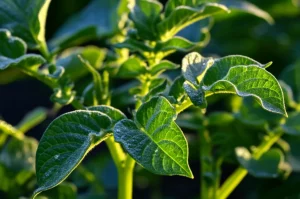Fungal Powerhouses: How Aspergillus Tackles Toxic Cadmium in Contaminated Soil
Hey there! Let’s Talk Dirty (Soil)
Heavy metal pollution is a pretty big deal, right? Stuff like cadmium (Cd), lead, nickel, zinc, and copper getting into our soil and water from industrial waste and other human activities. It’s not just bad for the environment; it’s seriously nasty for us, plants, and animals too. Cadmium, in particular, is a real troublemaker – it hangs around for ages and can mess with everything from plant growth to human kidneys and hearts. Yikes!
But here’s where it gets interesting. Nature often has its own cleanup crew. And in the world of tiny helpers, microbes, especially fungi, are proving to be real champs at dealing with these heavy metals. They can absorb them, accumulate them, and even change them into less harmful forms. This natural cleanup process is called bioremediation, and it’s way more eco-friendly and often cheaper than traditional methods.
Fungi are particularly promising because they grow fast, produce lots of biomass, and have cell walls packed with stuff that loves to bind to metal ions. Plus, they’ve developed some pretty clever ways to survive in places where metals are toxic. They can either stop the metals from getting into their cells in the first place or deal with them internally by binding them up or using special enzymes to fight the stress they cause.
Our Fungal Scouting Mission
So, we thought, why not look for these fungal superheroes in places where they’re already facing tough conditions? We headed to El-Sharkia governorate in Egypt, where soils have been irrigated with municipal and industrial wastewater for a long time. We figured if any fungi could handle heavy metals, they’d be living there!
We collected soil samples and, just as we suspected, the soil was loaded with heavy metals – way above safe limits for Cd, Pb, Ni, Zn, and Cu. This was the perfect place to find some metal-tolerant fungi.
We isolated a bunch of different fungi from these contaminated soils and then put them to the test. We grew them on plates with cadmium added to see who the toughest ones were. Out of twelve isolates, eleven showed some growth, but four were noticeably better than the rest. And the top two contenders, showing the best growth on cadmium-laced media, turned out to be isolates we identified morphologically as *Aspergillus niger* and *Aspergillus terreus*. Pretty cool, right? We then used molecular techniques (looking at their DNA) to confirm their identities, and their sequences are now in a big public database (GenBank).

Testing Their Limits: How Much Cadmium Can They Handle?
Knowing we had found some tough *Aspergillus* species, we wanted to see just how much cadmium they could tolerate. We grew them on plates and in liquid cultures with increasing concentrations of Cd.
We found that the higher the cadmium concentration, the slower they grew, which makes sense – it’s stressful stuff! But *A. niger* kept growing even at a whopping 450 mg/L Cd on agar plates, while *A. terreus* managed up to 350 mg/L. This showed *A. niger* had a slightly higher tolerance level in this test. In liquid cultures, their biomass (basically, how much fungal stuff grew) also decreased as Cd increased, especially at 200 mg/L. But the fact that they could grow at all in these conditions is remarkable!
The Inner Battle: How They Fight Back Against Cadmium Stress
Surviving in a cadmium-rich environment isn’t just about toughing it out; it involves some serious biological defense mechanisms. We dug deeper to see what was happening inside these fungi when they were stressed by cadmium.
One of the first things heavy metals do is cause oxidative stress, which is like cellular rust. This leads to damage to cell membranes, measured by something called MDA content. We found that as cadmium levels went up, MDA content increased significantly in both *A. niger* and *A. terreus*. This tells us they were definitely experiencing oxidative stress.
But our fungal buddies aren’t defenseless! To combat this stress, they ramp up their production of antioxidant enzymes like PPO, APX, and POD. These enzymes are like tiny cleanup crews that neutralize the harmful molecules causing the stress. We saw a significant increase in the activity of these enzymes as cadmium concentrations rose, especially in *A. niger*. This suggests that activating these antioxidant systems is a key way they protect themselves. *A. niger* seemed to have a slightly more robust antioxidant response, which might explain its higher tolerance.
They also employ other protective strategies. We saw an increase in things like proline and total soluble carbohydrates (TSC) in the stressed fungi. These molecules act as osmoprotectants (helping balance water inside the cell) and can also help scavenge free radicals, further reducing oxidative damage. Think of them as internal shields.
And get this – they also increased their levels of thiols. Thiols are molecules containing sulfur, and they’re really good at binding to heavy metal ions. This binding can help sequester the metals, preventing them from causing damage inside the cell.

Beyond internal defenses, fungi can also produce organic acids and release them outside their cells. These acids can chelate (bind to) metal ions, making them less available or toxic. We looked at organic acid production and found something pretty neat: *A. niger* significantly increased its production of malic acid in the presence of cadmium, while *A. terreus* increased its succinic acid production. This suggests these specific acids play a role in their cadmium tolerance and detoxification strategies.
Cleaning Up the Mess: Removal and Accumulation
Okay, so they can survive the stress, but can they actually help clean up the cadmium? Absolutely! We measured their ability to remove cadmium from the liquid culture medium and how much they accumulated in their biomass.
Both *A. niger* and *A. terreus* were effective at removing cadmium. The removal efficiency increased with higher initial cadmium concentrations, at least up to the levels we tested (200 mg/L). We saw removal rates going up significantly as we increased the cadmium. This means the more cadmium there is (up to a point), the harder they seem to work at removing it.
Their bioaccumulation capacity (how much cadmium they could soak up per gram of their dry weight) was also impressive. This ability to take up and hold onto the metal makes them fantastic candidates for bioremediation.

So, What’s the Big Picture?
What we learned from this study is pretty exciting. *Aspergillus niger* and *Aspergillus terreus* isolated from soils constantly exposed to heavy metals aren’t just surviving; they’ve evolved robust mechanisms to deal with cadmium stress. They fight oxidative damage with enzymes and protective molecules, bind metals with thiols, and even pump out organic acids to chelate them. Crucially, they can effectively remove and accumulate cadmium from their environment.
This makes them incredibly promising candidates for mycoremediation – using fungi to clean up contaminated sites. Imagine using these tough little guys to help detoxify soils polluted with heavy metals! There’s still more to learn about the nitty-gritty of their resistance mechanisms, especially against combinations of different heavy metals, but our findings strongly support the potential of *A. niger* and *A. terreus* as natural, effective tools for tackling cadmium pollution. Pretty neat way to put fungi to work for the planet, wouldn’t you say?
Source: Springer







